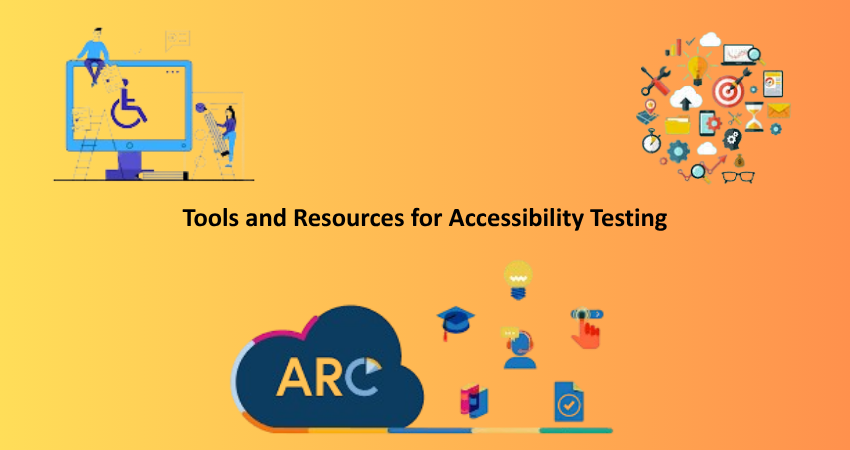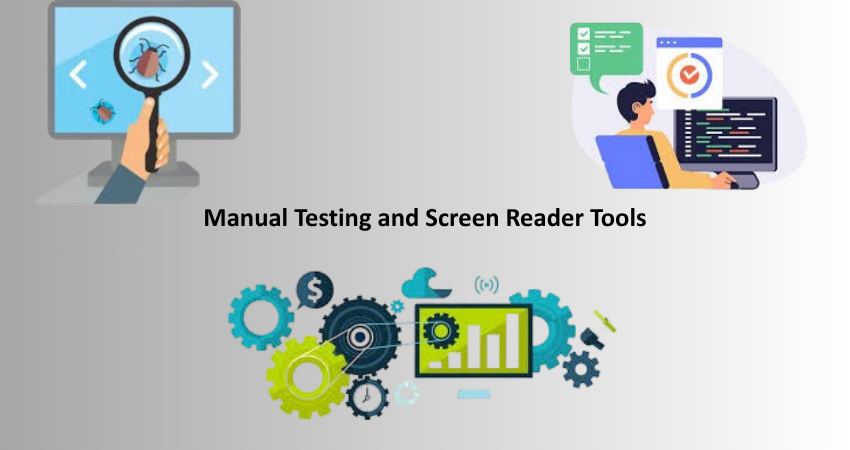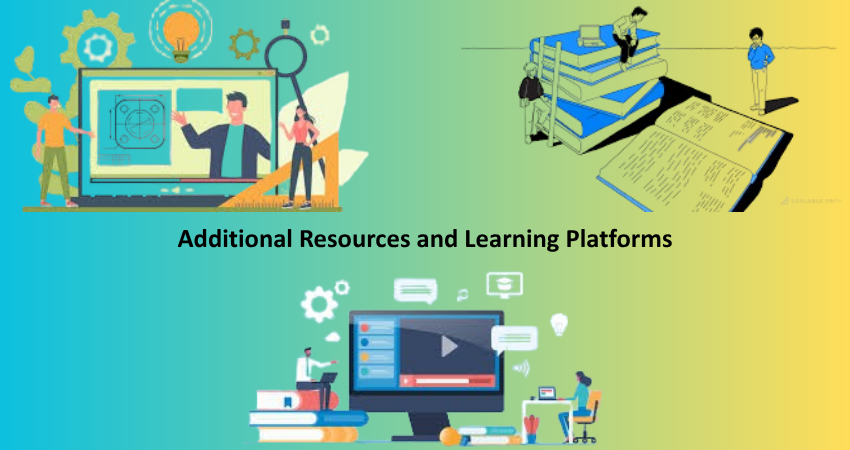
Introduction: The Importance of Accessibility Testing
Accessibility testing is crucial to making websites, applications, and digital products usable for people with different abilities. This includes those using assistive technologies such as screen readers, voice recognition, or keyboard-only navigation. Equal access is required not only as a legal obligation but also as a moral duty in the modern world, where digital access forms a basis for education, livelihood, healthcare, and societal interaction. Accessibility testing, therefore, identifies other barriers to accessing content and interacting with the interface so that organizations may create a truly inclusive digital environment.
Many sites, despite an increasing level of awareness, still barely meet the minimal requirements for accessibility, thus causing much frustration and exclusion to users with disabilities. Accessibility testing must be included as part of testing for every user experience, in terms of enhancement of the overall reach and reputation of the organizations and developers. It further mitigates the risk of lawsuits arising from violations of regulations such as WCAG and ADA. This article will highlight tools and materials that are helpful in making accessibility testing a part of the everyday development process, including design practices.
Automated Accessibility Testing Tools
Axe by Deque Systems
Deque Systems’ Axe is among the most preferred and familiar automated accessibility testing tools around. It provides browser extensions for Chrome and Firefox, enabling developers to scan web pages for WCAG violations directly from the browser. Axe is praised for its speed, accuracy, and intuitive interface that takes the hassle out of detecting and fixing accessibility issues. Another highlighting feature of Axe is its ability for accessibility testing during the development and deployment phases as developers integrate it into CI/CD pipelines.
Axe mostly sets itself apart with its elaborate report and guidance. After performing a test, the tool generates a list of violations summarizing the nature of each and linking to pertinent World Wide Web Consortium (W3C) Web Content Accessibility Guidelines (WCAG) criteria and advice for remediation. This gives a chance for both rookie and veteran developers to learn accessibility without flailing through a hard road. Enterprise solutions are also available from the Axe family, with additional features for automated accessibility testing and auditing for teams needing to go beyond just Lite-The Axe DevTools Pro and Axe Auditor.
Lighthouse by Google
GANGE: Lighthouse is an open-source tool from Google that audits web pages on performance, SEO, best practices, and accessibility. Lighthouse comes as a built-in feature in Chrome DevTools but can be executed from the command line or via the Node module. It assigns scores to web pages for accessibility on a scale of 0-100 while calling out ‘specific issues’ with ‘actionable advice.’ Subsequently, such ease of tracking improvements over time enables the developer to prioritize fixes based on impact.
As far as access audits go, they are not as extensive on Lighthouse as they are on Axe and other specialized tools; however, they come in very handy for the developer who is already using Chrome for testing and debugging. They give quick insight into the accessibility of a particular feature and serve as a good first step ahead of a more thorough accessibility audit. The tool also gives a few good suggestions for improving color contrast, adding alt text, and keyboard navigation—all things that are key to an inclusive user experience.
Manual Testing and Screen Reader Tools

NVDA (NonVisual Desktop Access)
NVDA is an open-source and free screen reader developed for Windows to help blind and visually impaired users access, retrieve and use digital content using synthesized speech and/or Braille. For developers and testers, NVDA provides a golden opportunity to see website content from the perspective of a blind user, thereby identifying defects that are commonly missed by automated tools. Such defects are concerning focus management, keyboard navigation, and absence of meaningful semantic structure.
Manual accessibility testing with NVDA offers experience, unlike that which can be realized with automated tools. It enables the developer to ascertain whether content makes sense when read aloud, whether headings are structured the way they should, and whether forms and links are properly announced. Moreover, NVDA works with most web browsers, such as Chrome, Firefox, and Edge; thus, it is really versatile in testing across different browsers. Hence, using NVDA in your strategy will contribute to your comprehension of accessibility compliance.
VoiceOver for macOS and iOS
VoiceOver is the basic built-in screen reader for Apple systems and iOS devices. It is accessible to blind people via gestures or keyboard commands to use applications and websites. These days, developers are urged to perform manual accessibility testing using VoiceOver on their applications within the Apple Platform. It helps teams ensure that content is readable, controls are operable, and navigation logically flows from one element to another.
Testing with VoiceOver gives you a real-life perspective on how users may use your website or application with the respective assistive technology. Developers can activate VoiceOver on their Macs or iPhones and traverse through the interface checking for issues such as unlabeled buttons, incorrect roles for elements, or inconsistent navigation cues. This intensive hands-on approach works well alongside automated checks, with the focus rightly shifting from compliance with code to a satisfying user experience, which in turn is central to achieving really good accessibility standards.
Browser Extensions and Developer Tools
WAVE Evaluation Tool
A plug-in to be installed in a browser, the WAVE Evaluator, developed by WebAIM, pinpoints issues related to accessibility in a webpage with the help of overlay icons and markers placed directly on top of the content. This gives immediate visual feedback that highlights missing alt text and poor heading structures as well as an inadequate contrast of colors among other such problems. Further more, WAVE has an extensive panel that categorizes the problems according to their types and severity in order for the easier fixing of the issues created by the site.
As it shows all the avoidance of extra labour while being a comprehensive designer or content author, this tool truly acts as a boon for the testers in QA. An intuitive graphical user interface simplifies these complex details and makes it a much easier task for those bearing this burden. In addition, the tool analyzes contrast ratio requirements and structures to maintain legibility and logical flow of content. WAVE can also be used alongside screen readers and keyboard navigation for extensive accessibility reviews.
Accessibility Insights by Microsoft
Accessibility Insights is a set of tools produced by Microsoft to assist developers in locating and fixing accessibility issues in Web and Windows applications. It includes a browser extension for Chrome and Edge, supporting automated checks, guided manual assessments, and fastpass testing. The guided assessments lead users through the WCAG criteria, ensuring thorough coverage and greater understanding of it.
One astonishing feature of Accessibility Insights is integration with existing workflows and collaboration tools. For example, issues found in testing can be exported to Azure DevOps or GitHub as work items for easy tracking and resolution. The tool also supports live inspections and tab stops visualizations, exposing problems with keyboard navigation. It is this balance between automating and guiding manually that makes Accessibility Insights a strong tool for building more inclusive software.
Additional Resources and Learning Platforms

The A11Y Project
A community effort, The A11Y Project is all about providing plenty of resources but on digital accessibility. These include lists, articles, tutorials, and tools for developers, designers, and content creators to build accessible products. In addition to that, it also keeps its audience updated on any news, legislation, or acts related to accessibility, thereby serving as a perfect hub for knowledge and skill improvement.
If there’s anything left worthwhile in The A11Y Project, it is the accessibility checklist. This checklist corresponds to WCAG guidelines, offering clear, actionable advice so that important accessibility concerns are not overlooked during an audit conducted through a Web site or an interface design. Furthermore, it includes open-source tools; forums for discussion among community members as well as glossary terms dedicated to accessibility, making it the top resource for anyone working in an increasingly digital world.
WebAIM (Web Accessibility in Mind)
WebAIM website is a venue for trust and authority in the field of web accessibility. It offers an extensive collection of education materials, training courses, and test resources. The articles talk about and provide guidance on several topics like compatibility of screen readers, color contrast, keyboard access, and ARIA use. Besides the WAVE tool we’ve earlier discussed, WebAIM produces research papers to demonstrate current trends in accessibility along with users’ experiences.
The distinguishing characteristic of WebAIM is its emphasis on education and practical advice. The site houses an interactive simulation illustrating accessibility barriers to elicit empathy from design teams for the users experiencing them. WebAIM partners with organizations to conduct training that is tailored to their needs, as well as accessibility audits to ensure that teams have the requisite knowledge and experience to implement inclusive design. In either case, whether you or your team are completely new to accessibility or are looking to deepen your knowledge, WebAIM serves as an invaluable resource for ongoing learning and enhancement.
Conclusion: Making Accessibility a Priority
Accessibility testing is not just a checkbox in the process of development; it is continuous commitment toward inclusion, equity, and usability-of-all type. With automated tools, manual testing techniques, and forms of educational resources, teams can develop truly digital experiences that serve everyone. The tools and resources mentioned in this article form a robust foundation for identifying and resolving accessibility barriers across platforms and devices.
And finally, if a organization brings in touch the users with disabilities it will also bring in benefits to all other users by making things easy for everyone, maximizing performance, and making the sites more satisfying to use. It will confine the organization to the periphery of law and ethics as well as provide it security from various forms of coping harm, instilling innovations and empathy in the process. Trendy yet proactive, keeping access testing within technology will remain key in facilitating empowerment and inclusion by technology during transformation.